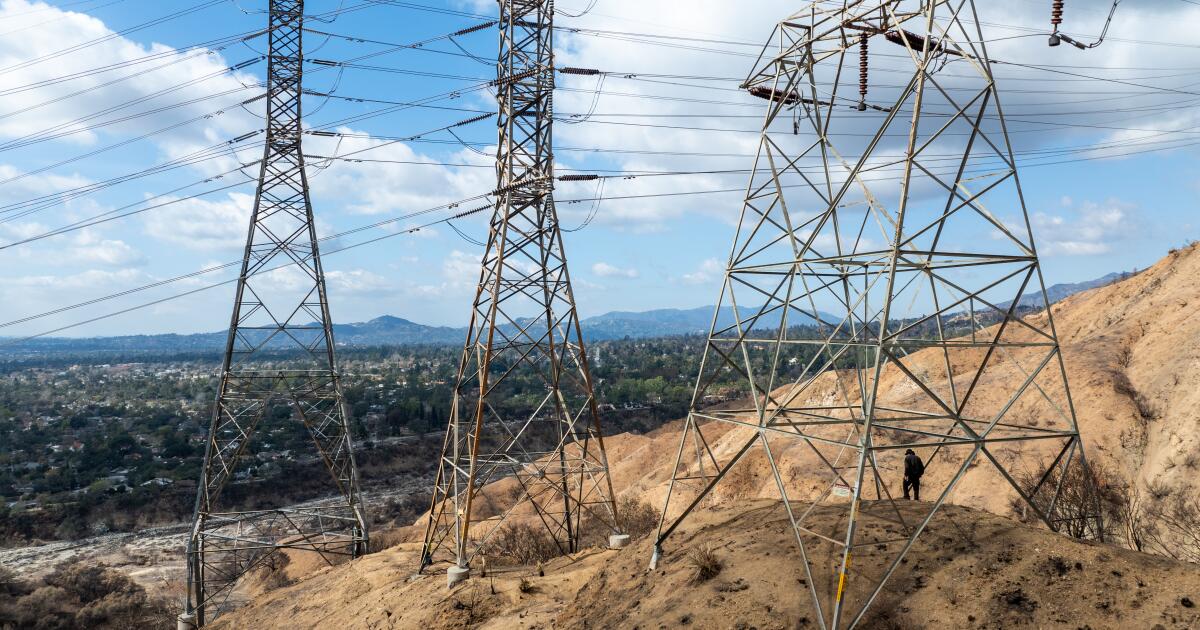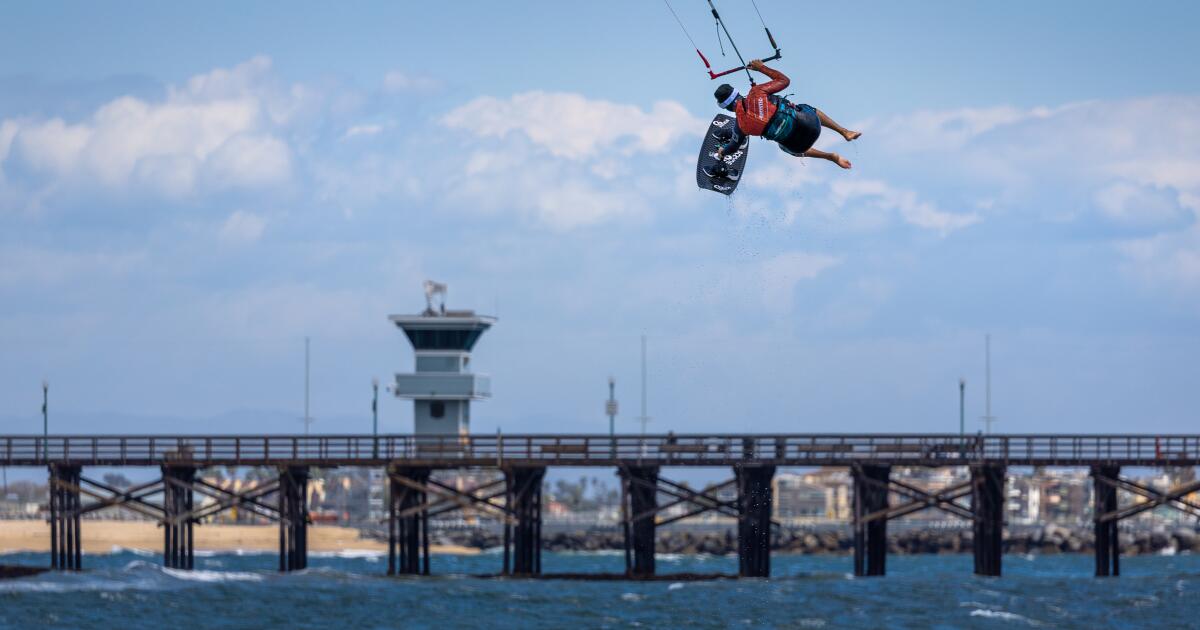‘The fire would be prevented.’ How to use of California is the removal of old power lines

The power line left by the fires of Eaton’s fires may have been removed over the Law under the Law proposed by the South Caliform resources, but the law was weak among resources, according to records and discussions.
Country controllers know that old transmission lines may begin wildfires, and in 2001 they proposed that security law would have forced bad lines unless they were able to show that they would use it.
Between the opposition of work companies, the commissioner’s commissioner read a proposal for several years, finally a service down to allow old lines to be deadly and decided.
One of the old passing lines, Mason of the Maso-Sylmar in the Vietnamese War, was in the center of the central case of cases, killing 19 people and destroying 9,400 homes.
Edison said the leading record of the reasoning that the old line of the century was briefly empowered, creating an arc that aroused the wild fire. The investigation is underway.
Raffy Stepania, an electrical engineer who was part of a team of security Commission that proposed 2001 lines lowered abandoned lines, the commissioning commission reported the national regulation.
“There have been a lot of stress for us to agree with services in everything,” said Stepisia that resources “have written those rules.”
He is now retirement at the Commission, lives in Stepanians in Altadena. His house survived the Eaton fire, but homes meet his property.
“The fire was not banned,” he said.
Edison, answering questions from times, said the company stores the MSA-Sylmar submitting location because it thought it might need a line next time. Latterted electricity in 1971.
“We have these unemployed lines still available because there is an opportunity for them to use in the future,” said Menon Chief Edison, EDIson president of the engineering system.
Menon said the company explores and keeps good lines to ensure their safety.
Loretta Lynch, President of the Commission in 2001 when changes were suggested, said he recalled the security staff who came to him and explained why laws needed to be strengthened. But the effort met against the workers of the works, he said.
Finally, the commission allows for the laws of negotiations in many of two years.
The weak suggestion was confessed in 2005, within two weeks of Lynch’s time expired. Lynch’s departure left the three people in a five-member commission, Michael Peevely, former president of Edison International, Southern California Efison Company.
“People who were trying to improve safety were deducted in the background of stakeholders and what happened was the final decision that had rolled back safety guidelines,” Lynch said.
In conversation this week, Peeveley acknowledged that after 20 years, the duration of the radiation has been repeatedly showed some wild games, the commission may have done differently.
“If we didn’t know what we now know, maybe we were safe in a different conclusion,” he said.
Some commissioners who approved the Law was Susan Kennedy, who was the official of the workers of the Gov. Geoffrey Brown, lawyer and former cousin Jerry Brown. Brown said he could not remember the votes. Kennedy was not at hand.
Over the years, 2005 Commission decree, discarded energy lines have continued threatening, a large miles of unused miles of unused transmission lines acting as California.
In 2019, investigators followed the Knlade Fire in Soloma County, which destroyed 374 homes, in a row left by the Pacific Gas & Electric.
After the Fire of Eaton, the Executive Director Ruth Rachel Peterson was called before the use of the meeting and the Embud Committee to address the power lines.
“If we wanted to know how much of the lines were, is there any place where we can find that information?” Asked a conversation
“Not so today, Astesbember,” replied Peterson. “And, I think, I’m partly because the service areas are too big and pieces of machines are so much that the register of something may or may not be.”
“Is there a need for a time to remove discarded lines?” Asked the meeting Pilar Schiavo (D-Santa Clarita).
“Never one,” replied Peterson.
Terrie was successful, spokesman spokeswoman said in the e-mail that the commission expected companies to evaluate and safeguard serious lines.
“Needing resources to remove energy lines on time … it will be reported and can higher the customer debts used,” writes. He refused to make officials available for discussions.
Edison said formerly that the unused transmission line at Eaton Canyon may have been given power for the importation, process where the gardens were created by live rows nearby causing a mature electricity.
The company creates two of the travel lines running like Dormant Mesa-Sylmar Line. They were enabled when the videos captured Eaton Fire Washing under one of the MESA-Sylmar distribution towers.
After the 2019 KNCade Fire, PG & E said the 262 miles were agreed to remove 262 miles in the lines that could not use the future. The company said it would prioritize the removal of those where the risk of submission is high.
“In appropriate cases, failing areas can put the dangers of wild fire and security,” PG & E its plan to remove lines.
Edison says it has 465 miles of the extending line in its field. Kathleen Dunleavy, Edison spokesman said the company could not produce the places of those lines because “it is viewed as confidential.”
How would you explain ‘condemnation’
The laws of the State Use has long said the “Eternal Lines” should be removed to “will be a community trouble or accident.”
But services and security employees of the Commission sometimes agree on what lines were left.
In 2001, where their commissioners and its staff had to strengthen the law, Edison challenged the agency that he had broken the Lancaster in the lancasant. The man Edison said that he was trying to steal machines that were up to the stake and were put on electricity, according to the Commission documents.
Edison told the safety employees that there was a waiting order for the service that would be re-installed in the area, arguing that it was not left. Past workers find that no work command, according to the investigation of the Commission by death.
In order to strengthen the law, the order of January 2001 to describe permanent lines as any line without service “unless the owner can indicate in the right documents.
Edison and other proposal and legislative legislative legislation proposed that proposed commission, requested a program to be interviewed in the workplace, to show documents.
Finally, the Commission’s administration judge allowed 50 days for workshops during the two years. The judge also allowed Edison and other resources to pay $ 180,000 to select and recruit the counselor to facilitate workshops, according to the Commission documents.
The purpose of the workshops, according to the Commission book, was “Collecting Executive Comments and Minerals to Disagree.”
At workshops, the Commissioners’ commissioners of the commission protects the proposal when they listened to multiple employees from employees and communication companies, according to Utility Companion held by the development management.
Companies did not just want to negotiate the proposed Commission Act. Scriptures show that companies have raised some 50 changes in the laws of the safety, including some potential weakeners.
Lynch, former Commission, called workshops “the worst way to learn the truth about what is needed to ensure safety” and means a payment facilitator “to include” the power of the Commission.
In the last words, the proposed emergence was a requirement for writing materials how they plan to use hot lines next time. Instead the language reviewed the law to describe dumped lines as permanently as those “determined by their owner that they cannot be used to come.”
In that description, services can keep their unused past lines to time indefinite when management believes that they may be used in the future.
The polling of the Commission is “distorted by all the purpose” of the proposal meant to strengthen the rules, Lynch said. Instead the final decision of the Commission relieved security services.
“It is the agentian generation,” he said. “It is down down.”
In July, Connor Flanigan, the executive director of Edison Edison, revealed that the Commissioners were granted the capacity to prevent the company’s proposal in the workshops, which were open to the public.
“When the Commission holds these steps, they tried to be very clear,” he said.
This document describes the final decision of the Commission including quotations from Edison Managers to promise the work process.
“Like many groups, the SCE found others, but not all, in that all the law he converted that,” said stewards.


